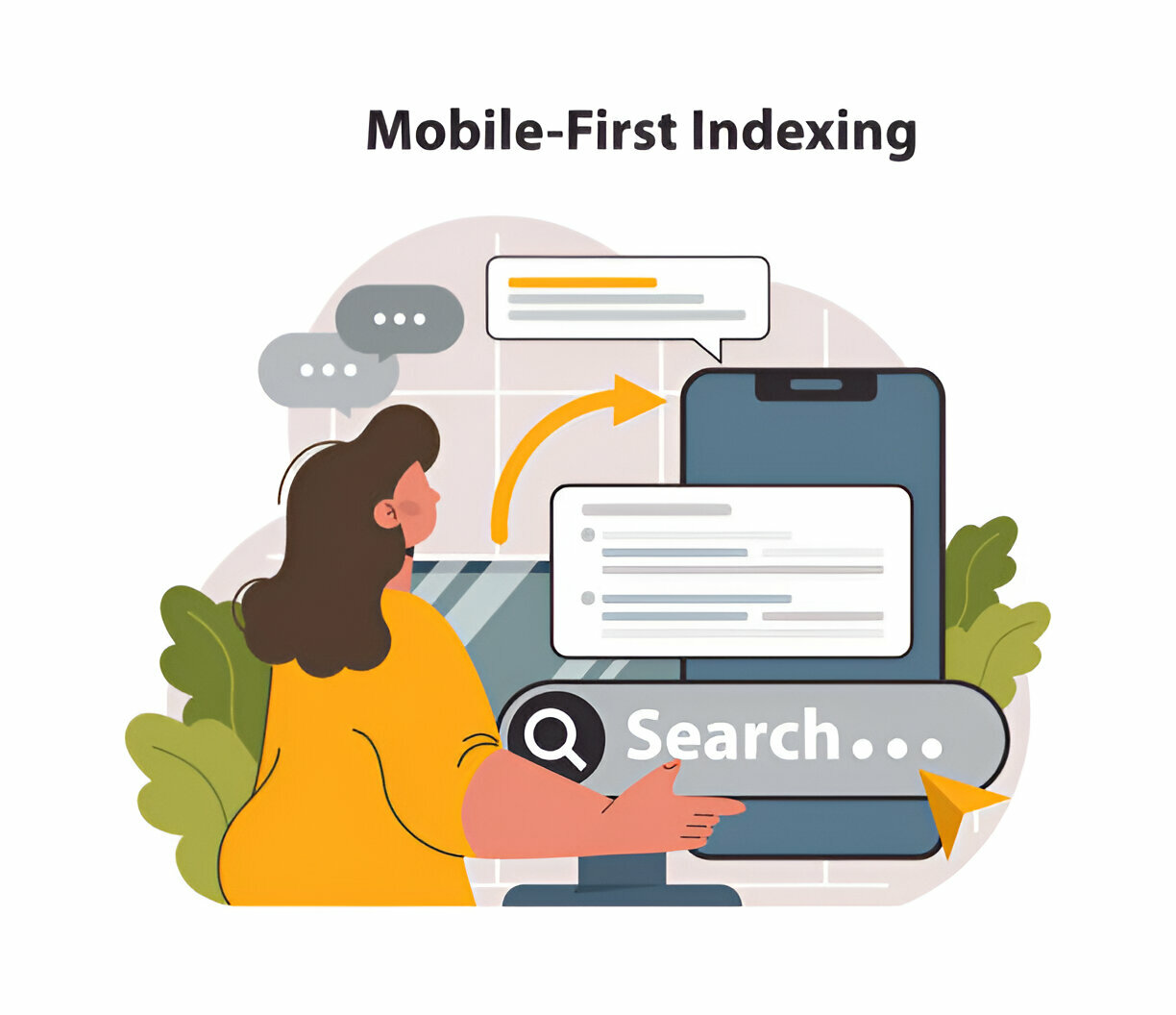What Is Mobile-First Indexing?
Mobile-First Indexing is a significant shift in how Google indexes and ranks websites, prioritizing the mobile version of a site’s content over its desktop counterpart.
Historically, Google used the desktop version for indexing, even if a majority of users accessed the site via mobile devices. With Mobile-First Indexing, Google aims to deliver search results that are optimized for the increasing number of mobile users globally.
Google initiated the transition to Mobile-First Indexing with experiments dating back to 2016, gradually rolling out the practice across various sites by 2018.
This evolution was prompted by the surge in mobile internet usage, surpassing desktop usage in many regions. As a result, Google recognized the necessity of indexing and ranking mobile-friendly websites more prominently to enhance user experience and relevance in search results.
What Does Mobile-First Indexing Mean For SEO?
Mobile-first indexing necessitates a fundamental shift in Content SEO strategies. Websites must ensure that their mobile versions are not only functional but also optimized for search engines.
This shift underscores the importance of responsive web design, where the site’s layout and content adjust dynamically to fit different screen sizes and devices.
Make Your Site Mobile-Friendly and Responsive
To align with Mobile-First Indexing, Google recommends several configurations:

Responsive Design
This approach uses the same HTML code and URL for both desktop and mobile versions, adjusting the layout based on the device’s screen size through CSS media queries.
Separate URLs:
This method involves serving different HTML on separate URLs for desktop and mobile devices. Proper implementation includes using the rel=”alternate” tag to specify the relationship between desktop and mobile pages.
Ensure Your Website Is Crawlable
For effective indexing under Mobile-First Indexing, it’s crucial to ensure that Google’s crawlers can access and index your mobile site’s content without hindrance.
Avoid using robots.txt to block critical CSS, JavaScript, or image files that are necessary for rendering your mobile pages.
Optimize The Multimedia Content
Multimedia content, such as images and videos, plays a pivotal role in engaging mobile users and improving SEO performance. Optimizing these elements can significantly enhance your site’s visibility and user experience:
Image Optimization:
Use descriptive filenames and alt texts that accurately describe the image content and include relevant keywords where appropriate.
Consider optimizing image sizes for faster load times on mobile devices.
Video Optimization:
Implement structured data markup (like VideoObject schema) to provide context to search engines about your videos. This can improve visibility in video search results and enhance overall content relevance.
Ways Of Fixing Multimedia Content For Better Indexing
To maximize the indexing and visibility of multimedia content on your mobile site, consider implementing the following strategies:
Check For Mobile-Friendliness
Regularly assess your site’s mobile-friendliness using tools such as Google’s Mobile-Friendly Test.
This tool identifies potential issues affecting your site’s performance on mobile devices, such as font size, tap targets, and viewport configuration. Addressing these issues promptly can improve user experience and SEO performance.
Mobile Optimization:
Ensure multimedia content is responsive and optimized for mobile devices. With mobile-first indexing becoming standard, it’s crucial that your multimedia content displays well and loads quickly on smartphones and tablets.
Hosting and CDN:
Choose a reliable hosting provider and utilize Content Delivery Networks (CDNs) to improve the delivery speed and reliability of your multimedia content. This can positively impact both user experience and search engine rankings.
Internal Linking:
Link multimedia content from relevant pages and blog posts within your website. This helps search engines discover and index your media assets more effectively, improving overall SEO performance.
Monitor and Update:
Regularly monitor the performance of your multimedia content in search engine results. Update metadata, alt texts, and other elements as needed to align with current SEO best practices and maintain relevance
Run a Site Audit
Conduct comprehensive site audits using tools like Google Search Console and third-party SEO audit tools.
These audits help identify and rectify technical SEO issues that may impact your site’s mobile performance and indexing. Pay attention to factors like page load speed, mobile usability errors, and structured data markup implementation.

Stay Ahead About Mobile Future Development
Stay informed about emerging trends and developments in mobile technology and SEO best practices.
Google continuously updates its algorithms and guidelines, emphasizing mobile-first principles. By staying proactive and adaptable, you can ensure your site remains optimized for evolving mobile-first indexing requirements and user expectations.
Conclusion
Mobile-First Indexing represents a pivotal shift in SEO strategy, emphasizing the importance of mobile usability and performance. Websites that prioritize mobile-friendly design, optimize multimedia content, and stay proactive in site maintenance are better positioned to enhance their visibility and competitiveness in search engine results.
Embrace these practices not only to comply with Google’s standards but also to deliver an exceptional user experience across all devices.


